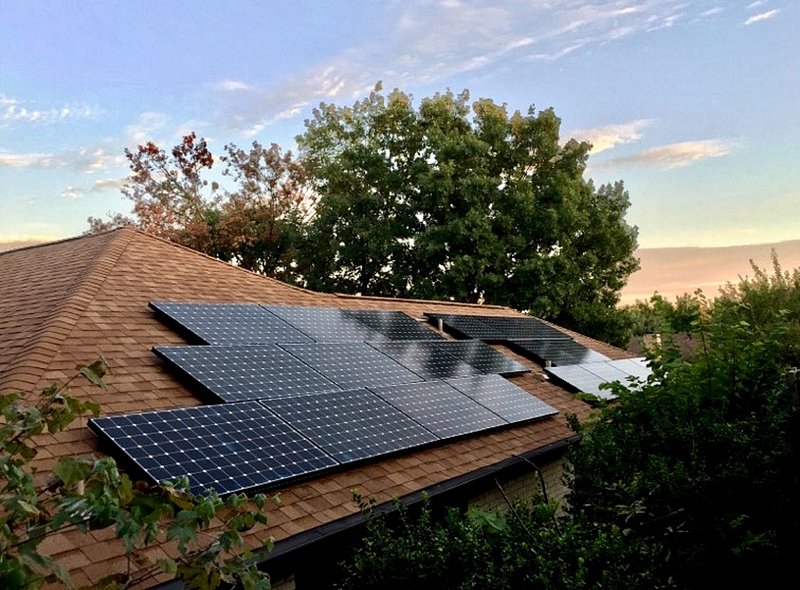The ITC helps American homeowners offset the cost of going solar
Rooftop solar panel systems offer homeowners financial savings and environmental sustainability. For many homeowners across the U.S. — solar is an exciting but intimidating investment.
The Solar Investment Tax Credit (ITC) has been instrumental in driving the adoption of solar energy systems by providing a significant tax incentive to homeowners. The initial cost of installing solar panels can often be a deterrent for many homeowners, but the ITC can alleviate the financial burden.
The Solar ITC makes solar energy more accessible to a broader range of American households across the nation. Homeowners deserve to see the benefits of residential solar panel systems, such as significant savings and energy security.
Summary
- The Solar Investment Tax Credit is a 30% tax credit for individuals who install a solar system on a residential property
- This government incentive makes going solar an affordable investment for many households
- Enact helps homeowners get custom solar panel systems and is committed to consumer choice and transparent pricing
What is the Solar Investment Tax Credit?
The Solar Investment Tax Credit (ITC) is a federal program designed to encourage the adoption of solar energy and battery storage. The ITC provides financial incentives to homeowners and businesses. This tax credit allows individuals and businesses to deduct 30% of the cost of installing a solar system from their federal income taxes.
The ITC covers a percentage of the system’s cost. After President Joe Biden signed the Inflation Reduction Act of 2022 into law, the tax credit was extended to 30% for installations between 2022 and 2032. The incentive will reduce to 26% in 2033 and to 22% in 2034 — then it will expire in 2035 without congressional renewal.
Homeowners can deduct 30% of the costs of installing a solar system from their federal income tax. For example, if you install a solar system and qualify for a $1,500 tax credit, it directly reduces your federal income taxes by $1,500.
The credit applies to the total cost of the solar system and is available for qualifying systems installed during the tax year. There is no maximum amount that can be claimed. This incentive aims to make solar energy more affordable and accessible, contributing to the growth of renewable energy sources and reducing reliance on fossil fuels for electricity generation.
What is a tax credit?
A tax credit in the U.S. is a direct reduction in the amount of income tax owed to the government. For example, if a taxpayer is eligible for a $1,500 tax credit, they can subtract that amount directly from their tax liability.
Unlike deductions — which reduce taxable income — tax credits lower the actual amount of tax owed on a dollar-for-dollar basis. This means that a $1,500 tax credit reduces the taxpayer’s tax bill by $1,500, providing a direct financial benefit.

How does the solar tax credit work?
The solar tax credit helps you pay less federal taxes. Let’s say you spend $20,000 on a system. You can take off 30 percent of that, which is $6,000, from the taxes you owe to the government. You have to claim the credit in the year when the installation is finished.
For example, if you owed $6,000 in taxes before the credit, a $6,00 credit would make your tax bill zero. The tax credit is nonrefundable, meaning if your tax credit claim exceeds your tax liability — the IRS is not going to write you a check for the remainder.
Can I use the federal tax credit with state incentives?
Homeowners can typically use the federal solar tax credit with state incentives and utility programs. Utility rebates are subtracted from the qualified expenses, able to be claimed for the tax credit. State energy efficient incentives are not typically subtracted from the qualified expenses. It is best to consult the advice of a tax accountant before tax season to ensure proper tax filing.
What costs are covered by the solar tax credit?
Before installing solar equipment, it’s important to understand which items qualify for the 30% tax credit. Make sure to verify which specific products are eligible under the ITC. The following purchases are covered:
-
- Solar panels: Solar panels or solar cells (including those used to power an attic fan, but not the fan itself).
- Related equipment: The tax credit covers balance-of-system equipment, such as wiring, inverters, racking or mounting equipment.
- Installer labor: The solar tax credit covers labor costs for onsite preparation, assembly or original installation.
- Fees: Permitting fees, inspection costs and developer fees.
- Sales tax: The tax credit covers sales tax related to all eligible equipment.
- Home batteries: Residential storage batteries, also called storage or solar batteries, installed with or after solar panel system installation. After January 2023, storage-only systems without panels can also be claimed.
What costs are not covered by the solar tax credit?
While the ITC covers many aspects of installing a home solar energy system, there are some costs associated with solar that cannot be claimed. Homeowners can only claim the federal tax credit for costs directly related to the installation of solar panels and home batteries.
A few examples of costs that cannot be claimed by the tax credit include the cost of repairing or replacing your roof before going solar. Additionally, homeowners cannot claim the cost of trimming or cutting down shade-causing trees.

Does my system qualify for the ITC?
Most home solar panel systems qualify for the federal solar tax credit, but there are qualifying criteria needed to claim the ITC. If you want to ensure your system is eligible for the solar tax credit, talk with an Enact home advisor during your free consultation.
Your system might be eligible for the tax credit if you meet the following criteria, defined by the U.S. government:
- Your solar panel system was installed between January 1, 2017 and December 31, 2034.
- The solar panel system is located at your residence in the United States.
- You own the solar panel system — either through cash or a financing plan — and are not leasing the system nor paying a solar company to purchase the electricity generated by your system.
- Your solar panel system is new or being used for the first time.
The federal government outlines eligible residencies as houses, houseboats, mobile homes, cooperative apartments, condominiums and manufactured homes.
Due to these criteria from the U.S. government, virtually all Enact-design solar systems are eligible for the credit. Homeowners looking to go solar can benefit from Enact’s custom solar systems, tailored for your home and energy needs.
Can I claim the solar tax credit on my rental property?
If you own a rental property, vacation home or secondary residency and want to claim the solar tax credit, there are some rules to keep in mind. You can only claim the solar tax credit if you also live in the house for part of the year and rent it out when you’re not there, according to Intuit TurboTax.
If your property is a vacation home or a part-time rental, you’ll need to adjust the credit to account for the time you’re not using it. For example, if you live there for six months out of the year, you can only claim 50% of the credit. So, if the solar system costs $12,000 and the full credit is 30%, you’d calculate 50% of that, which would be $1,800.
Don’t fall for misinformation
There are legitimate government incentives for going solar in the U.S. Homeowners can access the federal solar tax credit. Some states offer tax credits or rebates to consumers, these statewide incentives vary from state to state. Additionally, some utility companies offer programs that encourage homeowners to go solar.
Very rarely will homeowners receive a free solar panel system, despite prominent fictitious advertisements posted throughout the internet and social media. These ads will claim the government will “pay for your solar panels.” In the vast majority of cases, the government will not pay 100% of solar panel installation costs.
Typically, homeowners need to pay for their system and can receive a government tax credit. Some states may offer rebates and tax credits for state income tax. To be an informed, diligent consumer — it’s best to consult government or education websites, prominent news outlets or your tax professional before making decisions regarding government programs.
How to claim the solar tax credit during tax season?
To get the credit, you’ll need to fill out IRS Form 5695 when you file your taxes. You’ll figure out the credit amount on Part I of the form, and then put that number on your 1040 tax return.
If your credit is more than the amount of taxes you owe — let’s say you have a $5,000 credit but only owe $3,000 in taxes — you can’t get money back from the IRS for the extra amount. Instead, you can save it for next year’s taxes. So, in this example, the extra $2,000 credit can be used in the next tax year. If you forgot to claim the credit in the past, you can still do it by filing an amended return.
The bottom line
Going solar can be a great investment for many homeowners. A home solar system can save you money each month by reducing your utility bills and is better for our planet. The Solar Investment Tax Credit is a great resource for homeowners looking to invest in clean energy.
Enact is here to help homeowners get the right solar system for their home. Using our commercial-grade software, Enact home advisors design custom solar energy systems for homes and businesses across the country.
To get a free quote and see how a custom proposal can benefit you, schedule a free consultation with Enact’s home advisors. We offer homeowners choice, transparency and simplicity — offering a wide variety of equipment and payment options.
The best way to go solar is with a custom system, designed with you in mind. Schedule a free consultation with Enact and start your journey to savings.

